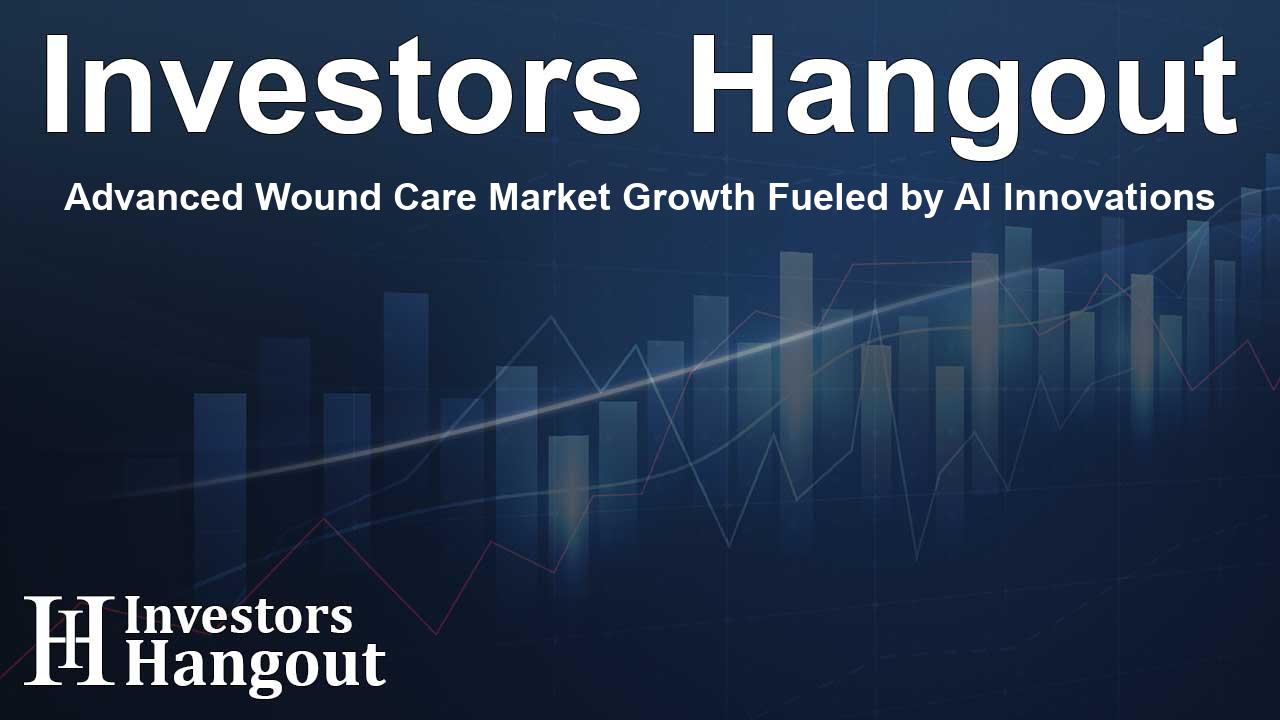Advanced Wound Care Market Growth Fueled by AI Innovations

Advanced Wound Care Market Dynamics
The global advanced wound care market is on an impressive trajectory, projected to grow by USD 4.19 billion between 2024 and 2028. This growth is primarily fueled by technological advancements within wound care products and the increasing prevalence of chronic diseases, particularly in the aging population. With a compound annual growth rate (CAGR) of approximately 6.05% during the forecast period, the market presents significant opportunities for both established and emerging players.
Key Drivers of Market Growth
One of the leading catalysts for growth in the advanced wound care market is the surging demand for innovative solutions to address chronic conditions. Diabetic foot ulcers, surgical site infections, and pressure ulcers have become notable health concerns, necessitating advanced treatment options. Notable advancements include nanoparticle-based wound healing technologies and gene therapy, which are paving the way for more effective treatments.
Furthermore, companies like 3M, ConvaTec, and Cardinal Health are at the forefront of offering advanced products, including sophisticated dressings and therapy devices that drastically improve healing outcomes. These innovations not only address the complexities of chronic wounds but also significantly reduce healthcare costs by minimizing the incidence of severe complications.
Market Challenges
Despite the optimistic forecasts, the advanced wound care market faces formidable challenges. High costs associated with advanced wound care products can act as a barrier to adoption, particularly in emerging markets. For instance, some leading products have high per-change costs that can accumulate quickly, influencing healthcare budgets.
Moreover, managing infections and ensuring proper treatment continuity remain hurdles that healthcare providers must navigate. These challenges increase the complexity of care pathways, ultimately impacting patient outcomes and healthcare expenditure.
Technological Innovations Shaping the Market
The integration of artificial intelligence (AI) in wound care is increasingly influencing market dynamics. AI-driven analytics can assist healthcare professionals in making informed decisions regarding wound management by providing real-time insights into healing patterns and infection risks. This enhances the efficiency of treatment protocols, ensuring that patients receive personalized care.
Emerging Trends in Advanced Wound Care
Among the noteworthy trends in the advanced wound care market is the rising popularity of combination dressings, which combine multiple therapeutic modalities into a single product. Such dressings not only offer better protection but also facilitate faster healing due to their absorbent and antimicrobial properties.
Antimicrobial agents like silver, iodine, and honey are actively used in modern dressings, enhancing their effectiveness against microbial infections common in chronic wounds. The push for innovative and user-friendly products continues to shape customer preferences, making it essential for companies to adapt to this evolving market landscape.
Geographical Insights and Market Potential
The advanced wound care market demonstrates varied growth trajectories across different regions. North America currently leads the market, contributing approximately 40% of overall market share, driven by high healthcare investments and robust technological adoption.
Regions such as Europe and parts of Asia are also witnessing an uptick in demand for advanced wound care products, primarily attributed to an aging population coupled with rising healthcare expenditures. The market holds promising prospects in developing regions, where healthcare infrastructure is improving and chronic diseases are becoming more prevalent.
Key Players Impacting the Market
Numerous key players are actively innovating within the advanced wound care sphere. Leading companies include Medline, Molnlycke, and Integra Lifesciences, which are deploying strategic initiatives like partnerships and expanding their product portfolios to include advanced dressings, therapy units, and biologics, thereby enhancing their competitiveness.
Frequently Asked Questions
What drives the growth of the advanced wound care market?
The growth is driven by technological advancements, increasing chronic diseases, and the demand for effective healing solutions.
What are the challenges faced by the advanced wound care market?
Challenges include high treatment costs, infection management, and the complexity of care pathways.
How is AI changing the landscape of wound care?
AI enhances wound management by providing real-time insights and improving treatment protocols through predictive analytics.
Which regions are leading the advanced wound care market?
North America leads the market, followed by Europe and parts of Asia, due to improved healthcare expenditures and aging populations.
What products are popular in the advanced wound care market?
Popular products include combination dressings and antimicrobial dressings, which boost healing and reduce infection risks.
About Investors Hangout
Investors Hangout is a leading online stock forum for financial discussion and learning, offering a wide range of free tools and resources. It draws in traders of all levels, who exchange market knowledge, investigate trading tactics, and keep an eye on industry developments in real time. Featuring financial articles, stock message boards, quotes, charts, company profiles, and live news updates. Through cooperative learning and a wealth of informational resources, it helps users from novices creating their first portfolios to experts honing their techniques. Join Investors Hangout today: https://investorshangout.com/
Disclaimer: The content of this article is solely for general informational purposes only; it does not represent legal, financial, or investment advice. Investors Hangout does not offer financial advice; the author is not a licensed financial advisor. Consult a qualified advisor before making any financial or investment decisions based on this article. The author's interpretation of publicly available data shapes the opinions presented here; as a result, they should not be taken as advice to purchase, sell, or hold any securities mentioned or any other investments. The author does not guarantee the accuracy, completeness, or timeliness of any material, providing it "as is." Information and market conditions may change; past performance is not indicative of future outcomes. If any of the material offered here is inaccurate, please contact us for corrections.